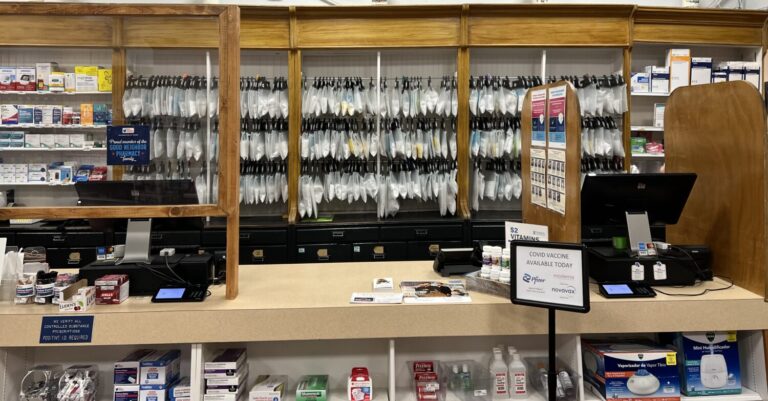“We can provide better care by embracing technology,” said Prosperity Drug Company owner, John Pugh, PharmD, RPh. He illustrates that scripClip® was a worthwhile investment for him because it not only improves productivity in his pharmacy, but customers also see and feel the difference.
The Opportunity
Prosperity Drug in Prosperity, South Carolina, dates back nearly 120 years. In 1903, the pharmacy shared space with a clinician practice as a true interdisciplinary team – a trend and clinical imperative that, Pugh points out, is incidentally coming full circle a century later.
In the early 2000s, Prosperity Drug was dispensing an average of only five prescriptions per day. While Pugh was in pharmacy school at University of South Carolina, he visited the hometown pharmacy and asked that its owner give him a call if he ever planned to sell. Serendipitously, Pugh got that call as he was graduating with his Doctor of Pharmacy, and he reopened Prosperity Drug with renewed vigor in May 2006.
“It was a mess,” Pugh admitted. But with thoughtful investments in technology and a caring team, he cleaned it up.
Now, Pugh and the four other pharmacists on staff fill roughly 400 prescriptions a day, working in close collaboration with local “cradle-to-grave” physician groups and the independently owned hospital.
While the Prosperity Drug team has expanded clinical services over the years, especially with COVID-19 vaccine administration and Medication Therapy Management (MTM), they’ve remained focused on working with other providers to answer questions and help make sure mutual patients are getting the best care possible.
“The dispensing drives everything,” Pugh explained. “If we’re not dispensing [medication in the pharmacy], there’s no clinical work.” And just the fact that he’s providing the prescription and over-the-counter medications and interacting with patients at the point of sale means he can see what’s going on with adherence in a way their other providers can’t. “Sharing the information is going to be important; we’re on the same team.”

The Solution
scripClip is one of the key technologies Pugh implemented to improve efficiency in the will-call area and provide a better patient experience.
“With the volume of pickup we have, it’s important to be able to get people in and out – and do it correctly,” he said.
The team was reluctant to embrace a new system, but by the end of the day it was installed in 2018, “they would have killed me if we’d gotten rid of it,” Pugh remembered. “It was such a game changer … to type in the name and ‘voila,’ the right prescription lights up. It’s not complicated.”
scripClip has helped the team support sustained growth in curb delivery service since the pandemic started. Without a drive-thru window, 10-20% of pickups are now done curbside. scripClip makes the process simple: A customer dials in from the car; the employee looks up the patient’s name, locates the order and runs the payment method on file; a pharmacist or clerk runs the order outside in no time.
The Payoff
“Finding prescriptions is where you save the time,” Pugh said, estimating at least a minute or two on every order in will call. Still, to him, the greatest ROI is in the customer experience. “A lot of patient decisions and perceptions of your pharmacy are made on things that are out of your control, [but] scripClip creates a polished, professional look. … There’s an immediate halo effect from how your pharmacy is operated.”
He explained that they “no longer feel like idiots” looking for prescriptions and, even more than that, that employees are able to create a welcoming atmosphere. “Our staff really, truly cares,” he said. “And you have to have time to care! At some point, it’s just a matter of survival and your ‘caring coefficient’ is going to go down because you’re just trying to get through the day.”
scripClip makes it easier for the Prosperity Drug team to get through the day and fulfill their mission of making people feel good about themselves when they walk out the door.
The system also helps them manage Return to Stock consistently. The workload has moved to a lower-level employee and feels more manageable because it can be done in small batches when they have windows of time throughout the day.
What’s Next?
It’s clear Pugh has no second thoughts about the value of scripClip at Prosperity Drug. He continues exploring ways new technology can make their pharmacy operation better – not replacing people; enhancing the services they provide. For example, their Medication-on-Time blister-packaging program is labor intensive, yet crucial. Taking time to dispense individual doses and also understand factors impacting adherence is integral to Pugh’s approach.
“‘I can’t remember to take [my medication]’ is different than ‘I can’t afford it,’ which is different than another reason somebody gives you,” so you try to deal with those issues on a patient-by-patient basis,” he explained.
It all comes back to having the time to care.

